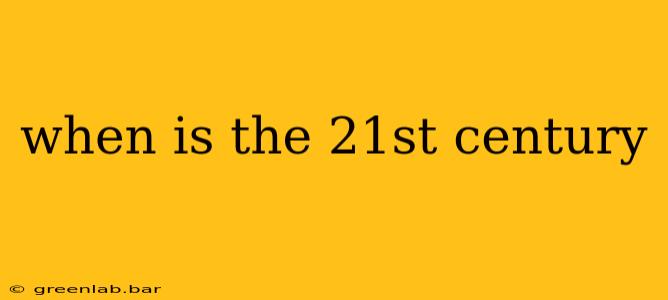The question of when the 21st century begins might seem simple, but it's surprisingly common and often misunderstood. The confusion stems from the way we count centuries and millennia. Let's clarify this once and for all.
The Simple Explanation: It Started in 2001
The 21st century began on January 1st, 2001. This is the most straightforward and widely accepted answer.
Why the Confusion? Counting from Zero
The confusion arises from our inherent tendency to think linearly. We're used to counting starting from one. However, centuries (and millennia) don't follow this rule. They're based on the ordinal numbering system.
Think of it this way:
- The first century (1st century CE/AD) spanned the years 1-100.
- The second century (2nd century CE/AD) spanned the years 101-200.
Following this pattern, the 21st century spans the years 2001-2100. Therefore, the year 2000 was the last year of the 20th century.
Millennia: The Bigger Picture
The confusion extends to millennia as well. The third millennium began on January 1st, 2001, coinciding with the start of the 21st century. The years 1-1000 comprised the first millennium, 1001-2000 the second, and so on.
Avoiding Future Confusion: The Simple Rule
To avoid confusion in the future, remember this simple rule: The nth century begins in the year 100(n-1) + 1 and ends in the year 100n.
For example:
- The 10th century: 901 - 1000
- The 20th century: 1901 - 2000
- The 21st century: 2001 - 2100
Conclusion: Clear Understanding of Time Periods
Understanding the structure of centuries and millennia is crucial for accurate historical and temporal referencing. By grasping the ordinal nature of these periods, we can avoid common misconceptions and communicate dates with clarity. So, remember, the 21st century began in 2001—and happily continues to this day!

